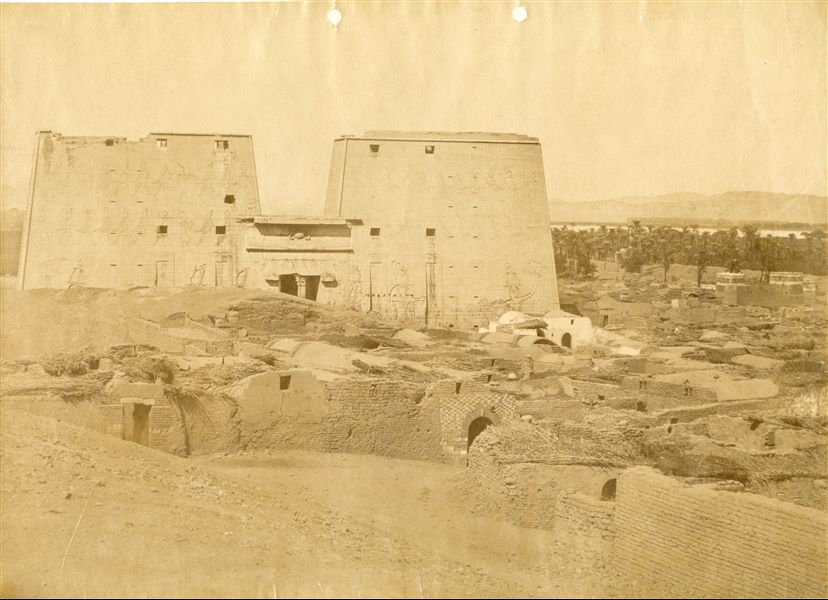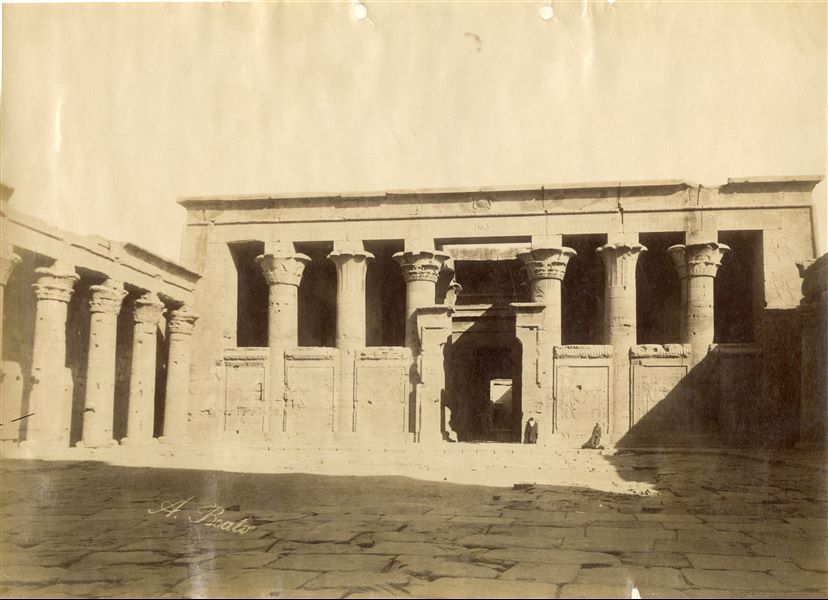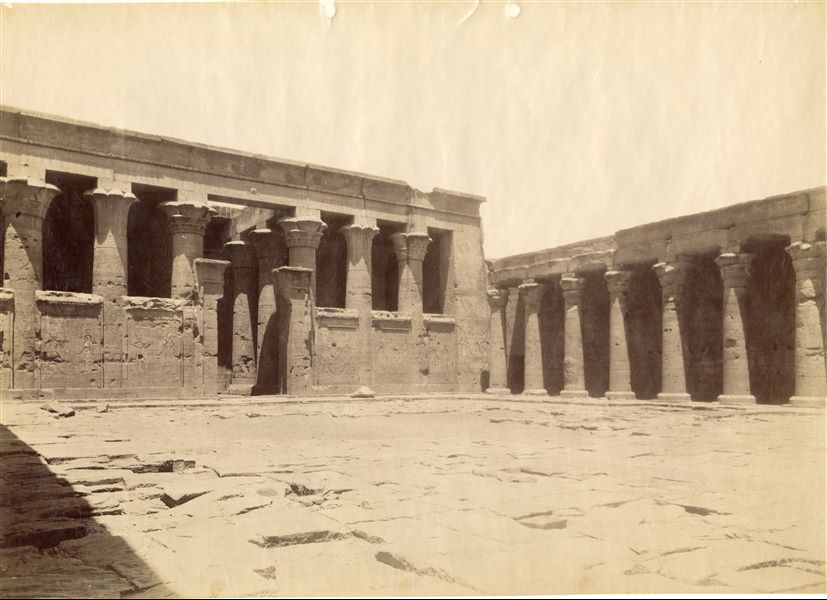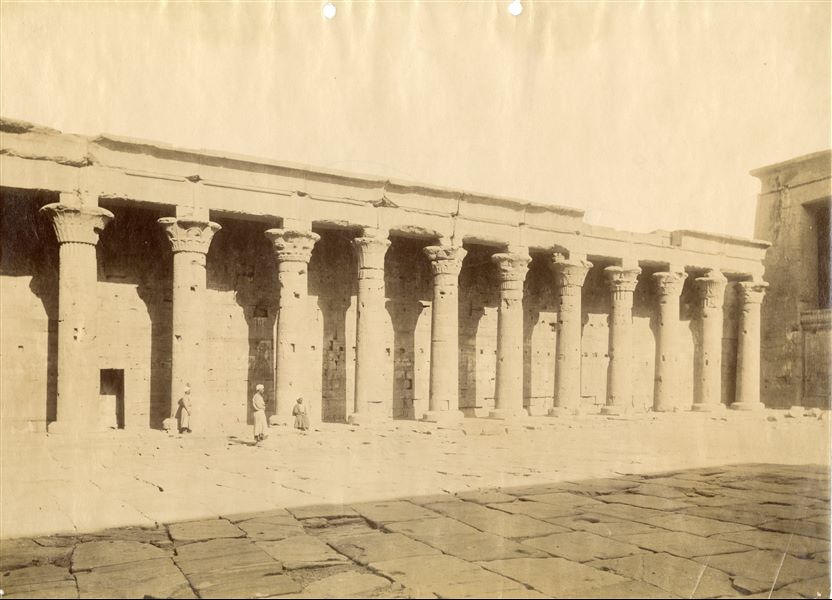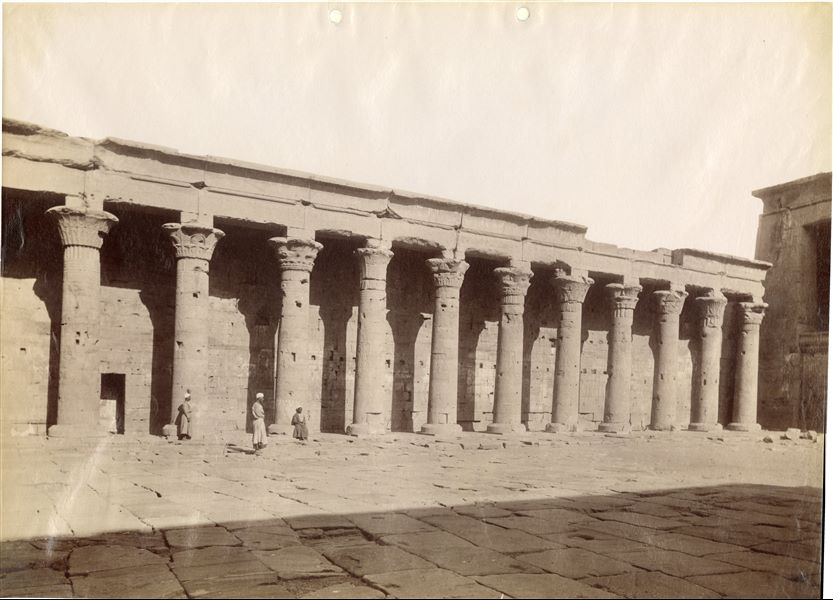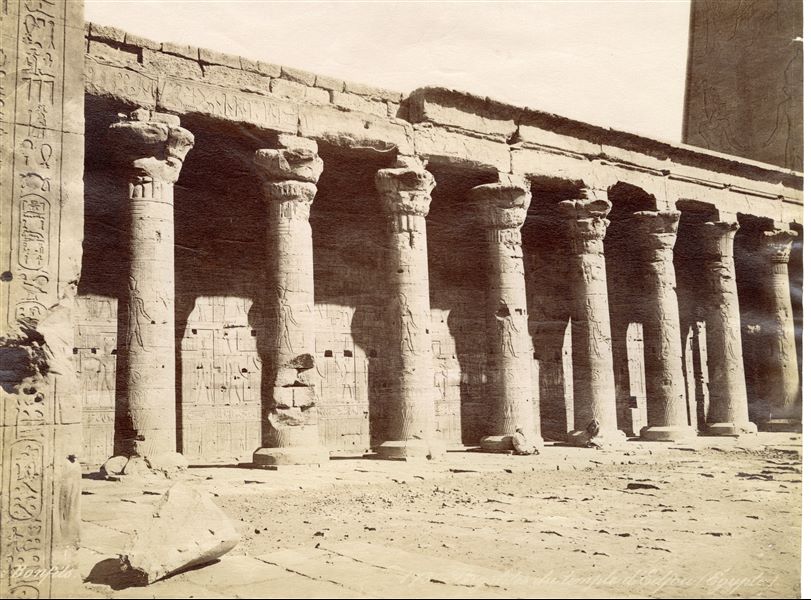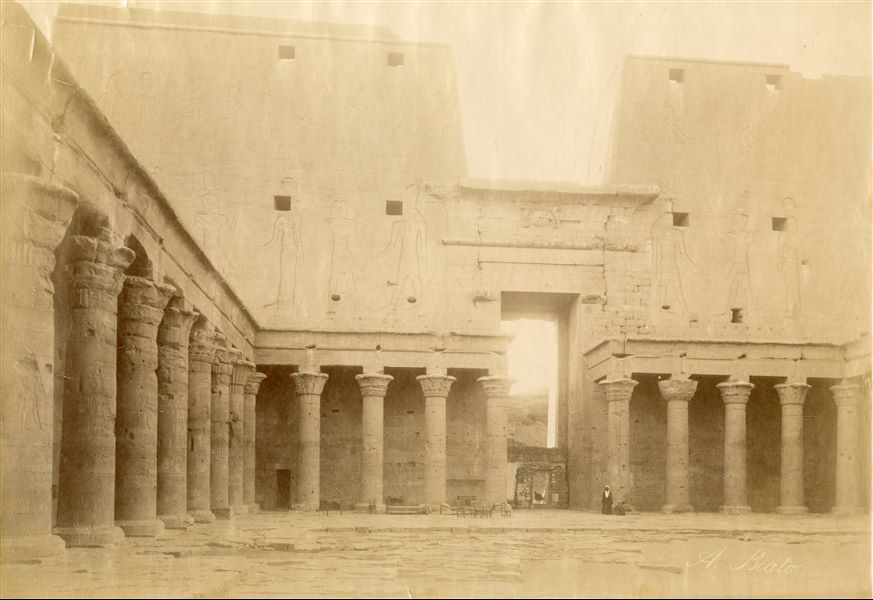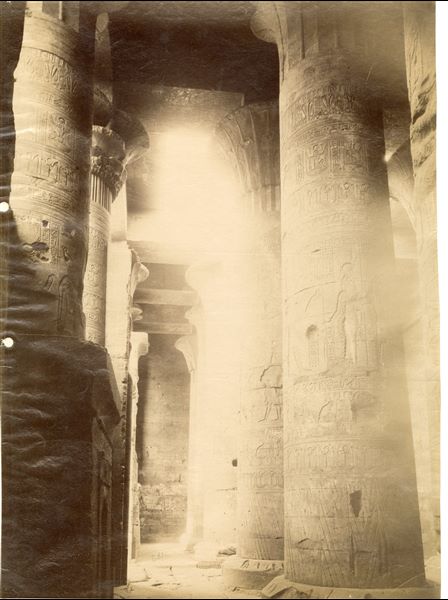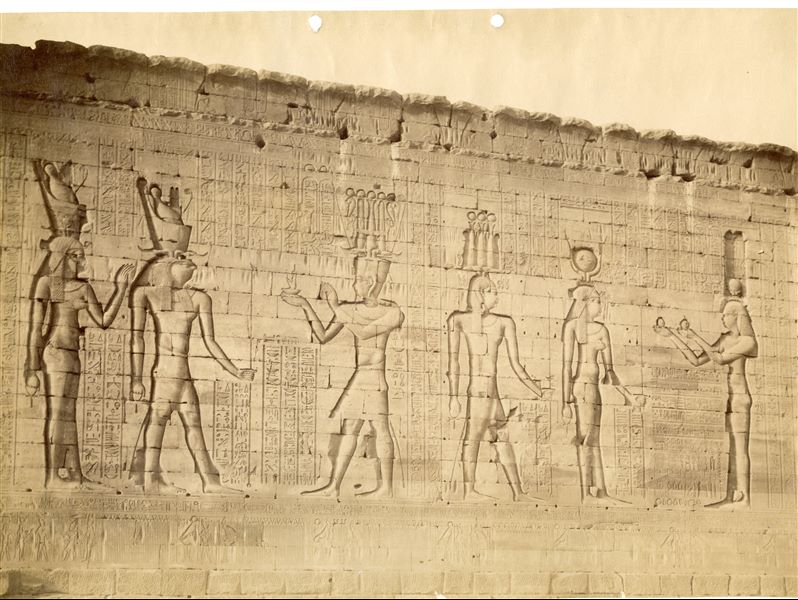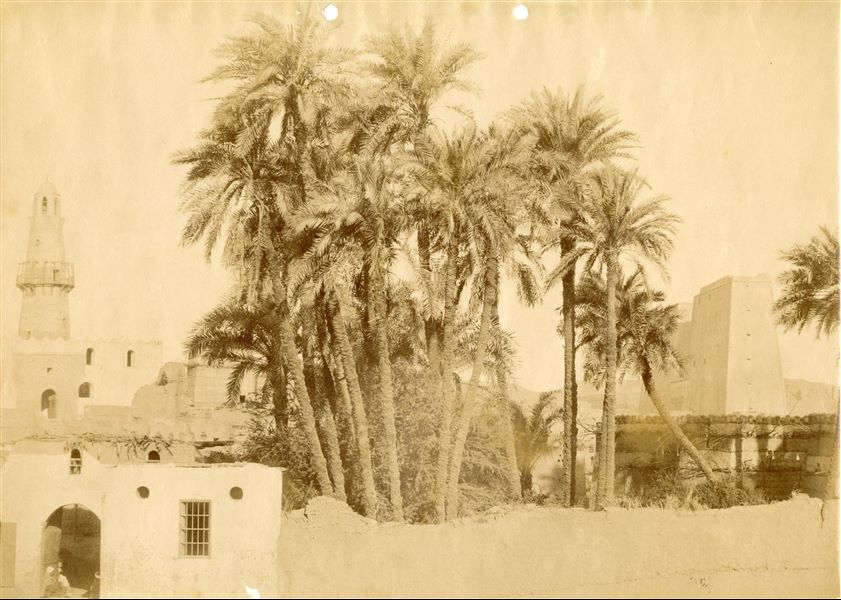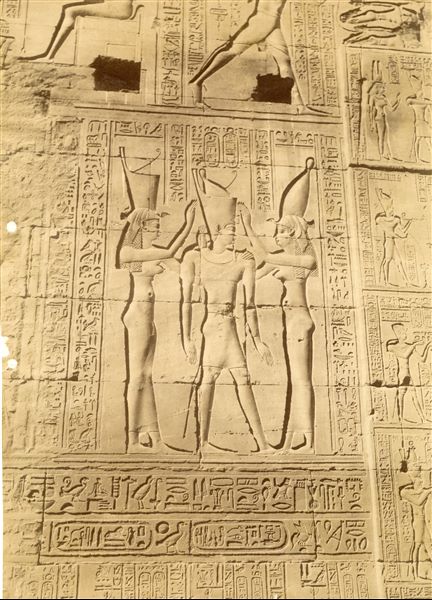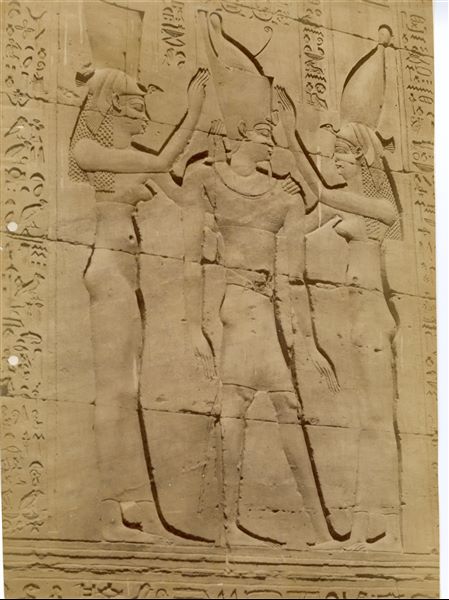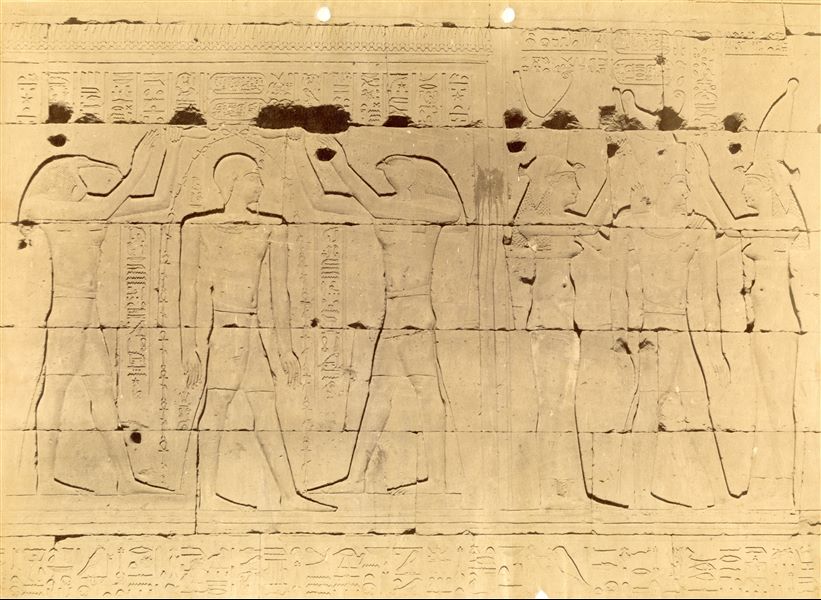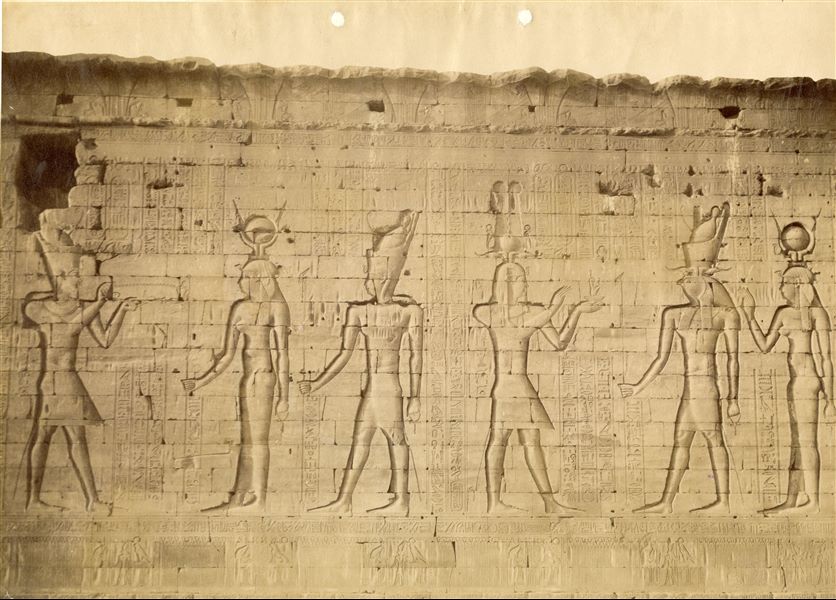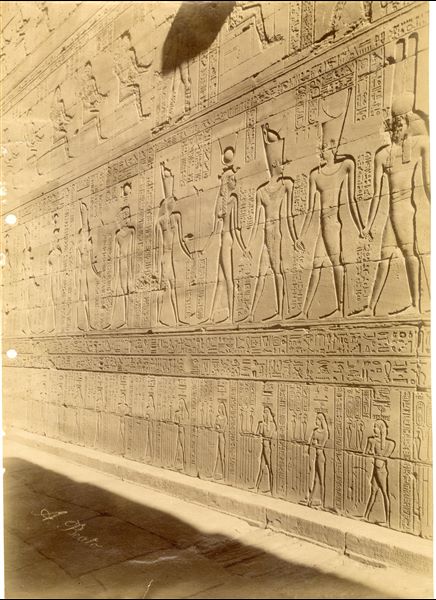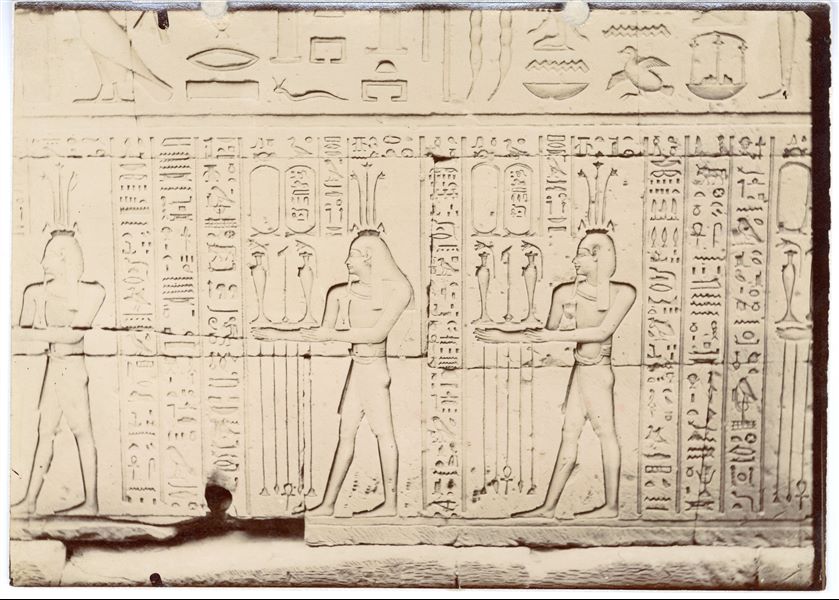The photograph shows the 19th century village of Edfu in the foreground, and the façade of the Ptolemaic temple in the background. Based on the calligraphic style, the work can be attributed to Antonio Beato.
Photograph taken from the top of the entrance pylon to the courtyard and pronaos of the Temple of Horus at Edfu; where the hypostyle hall and other inner rooms can be entered. It is interesting to note that the “windows” on the ceiling of both the pronaos and the innermost part of the temple which probably gave light to the rooms, are now closed. In the background, the egyptian landscape. The author's signature is clearly visible at the bottom.
The photograph shows the front side of the first pylon that accesses the Temple of Horus at Edfu. The Nile is visible in the background.
The photograph shows a close-up of the entrance pylon to the Temple of Horus at Edfu, through which there is a view of the courtyard and pronaos. It is curious to note that the monumental access is still closed by a wall with a door, built by the local inhabitants. The author's signature is faintly legible at the bottom left.
The photograph is a close-up of the entrance pylon to the Temple of Horus at Edfu, where the relief decorations with pharaohs and gods are clearly visible. It is curious to note that the monumental access is still closed by a wall with a door, built by the locals. The author's signature is visible at the bottom left.
The photograph shows the north-western corner of the massive pronaos of the Temple of Horus at Edfu, and part of the colonnade from the courtyard in front of it. A local inhabitant poses for the photographer in front of a column. The author's signature is visible at the bottom right.
View of the pronaos of the Temple of Horus at Edfu, with two local inhabitants standing in front of it, and the western part of the colonnade from the courtyard opposite. The author's signature is at the bottom left.
Photograph of the large colonnade of the Temple of Horus at Edfu seen from the southwest, with a glimpse of the colonnade on the eastern side of the courtyard in front of it. Based on the calligraphic style of the caption, it is possible to attribute the image to Antonio Beato.
The photograph shows a view of the west side of the colonnade from the courtyard in front of the entrance to the first hypostyle hall from the Temple of Horus at Edfu (on the right). Three egyptians are shown in front of the columns. Based on the calligraphic style of the caption, the shot can be attributed to Antonio Beato.
The photograph (same as the previous one) shows a view of the west side of the colonnade of the courtyard in front of the entrance to the first hypostyle hall from the Temple of Horus at Edfu, on the right. Three egyptians are shown in front of the columns. Based on the calligraphic style of the caption, the shot can be attributed to Antonio Beato.
Two local inhabitants are photographed in front of the columns of the western side of the colonnade, from the courtyard in front of the hypostyle hall of the Temple of Edfu, part of the pronaos can be seen on the right. The author's signature is at the bottom right.
The photograph shows a view of the eastern side of the colonnade from the courtyard in front of the façade of the Temple of Horus at Edfu, with two egyptians seated at the base of the columns. On the left, part of the jamb of the pronaos is visible, while on the right one can glimpse part of the inner wall of the entrance (first) pylon to the temple. The author's signature is visible at the bottom left.
View of the interior wall of the entrance pylon to the Temple of Horus at Edfu, with part of the courtyard’s colonnade. The signature of the author is at the bottom.
The photograph (taken from the court) shows the entrance to the hypostyle hall with papyrus columns from the Temple of Horus at Edfu.
The photograph shows a view of the colonnade of the hypostyle hall from the Temple of Horus at Edfu. Based on the calligraphic style of the caption, it is possible to attribute the image to Antonio Beato.
The photograph depicts a local resident seated next to the large naos (shrine) of Pharaoh Nectanebo II inside the Temple of Horus at Edfu. It is the oldest element of the temple visible today, and is believed to have originally contained an effigy of the god Horus.
The photograph shows a detail of the inscriptions on the rear exterior wall of the Temple of Horus at Edfu. On the basis of the calligraphic style, the image can be traced back to Antonio Beato.
The photograph depicts the exterior of the north perimeter wall of the Temple of Horus at Edfu, where sacred scenes of presenting offerings to the gods are carved. Based on the calligraphic style, the photograph can be attributed to Antonio Beato.
In the foreground there are some dwellings from the village of Edfu near the Ptolemaic temple, which can be seen in the background on the right. On the left, in the background, there is a mosque, which can be identified by its minaret. The calligraphic style of the caption on the back can be attributed to Antonio Beato.
The photograph shows a sacred scene from the Temple of Horus at Edfu, Pharaoh Ptolemy VI Philometor between two female deities, one wearing the white crown of Upper Egypt, the other the red crown of Lower Egypt.
The photograph shows a relief scene from the Temple of Horus at Edfu. Pharaoh Ptolemy VI Philometor is between two female deities in a purification scene, one deity is wearing the white crown of Upper Egypt, the other the red crown of Lower Egypt.
The photograph shows scenes from the eastern outer perimeter wall of the Temple of Horus at Edfu.
The image shows scenes from the northern outer perimeter wall of the Temple of Horus at Edfu.
The photograph depicts sacred scenes from the interior walls of the Temple of Horus at Edfu. The author's signature is visible at the bottom left.
Wall reliefs from the interior rear walls of the Temple of Horus at Edfu, from the Ptolemaic Period.
Wall reliefs from the interior rear walls of the Temple of Horus at Edfu, from the Ptolemaic Period.
Wall reliefs from the interior rear walls of the Temple of Horus at Edfu, from the Ptolemaic Period.
Wall reliefs from the interior rear walls of the Temple of Horus at Edfu, from the Ptolemaic Period.
